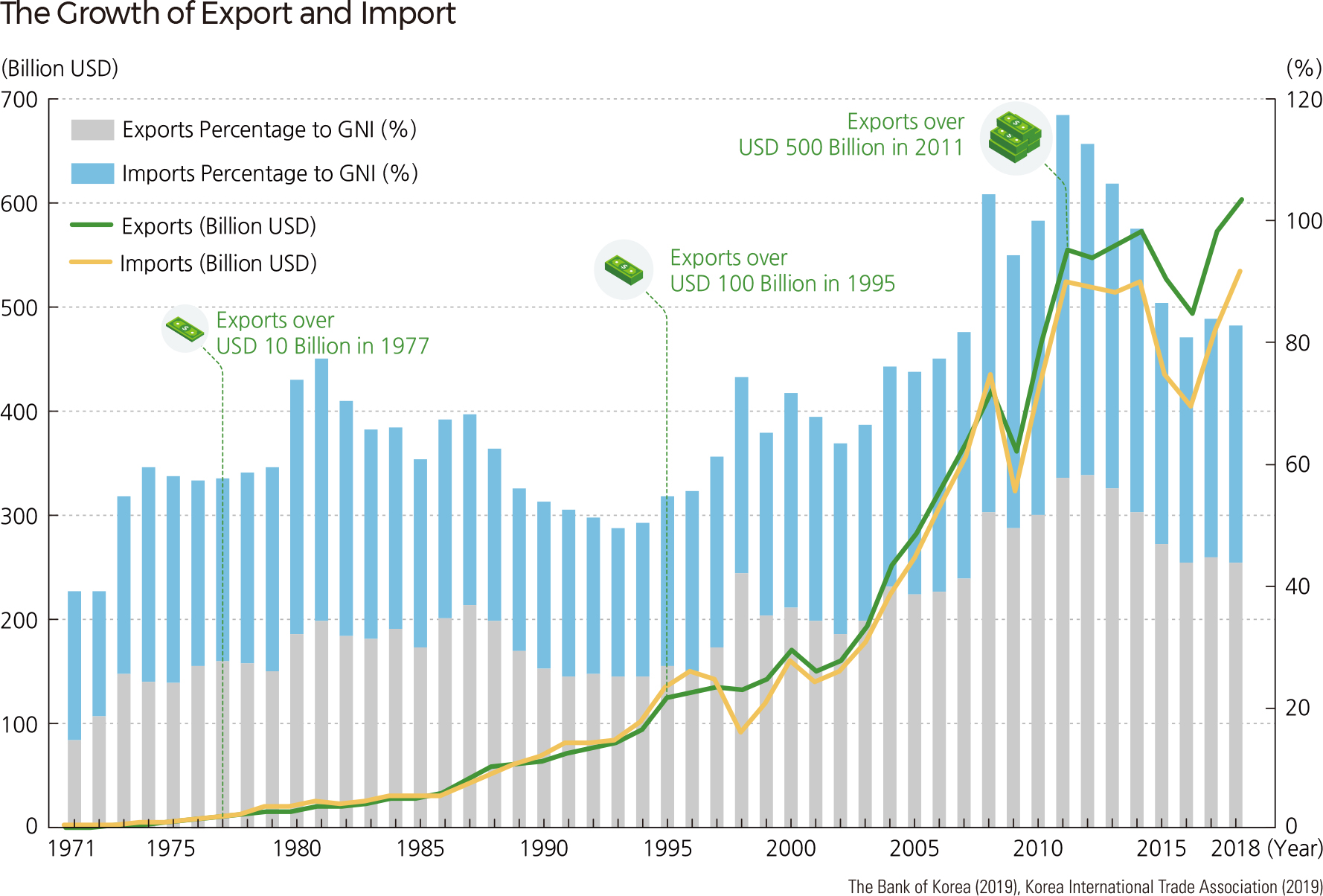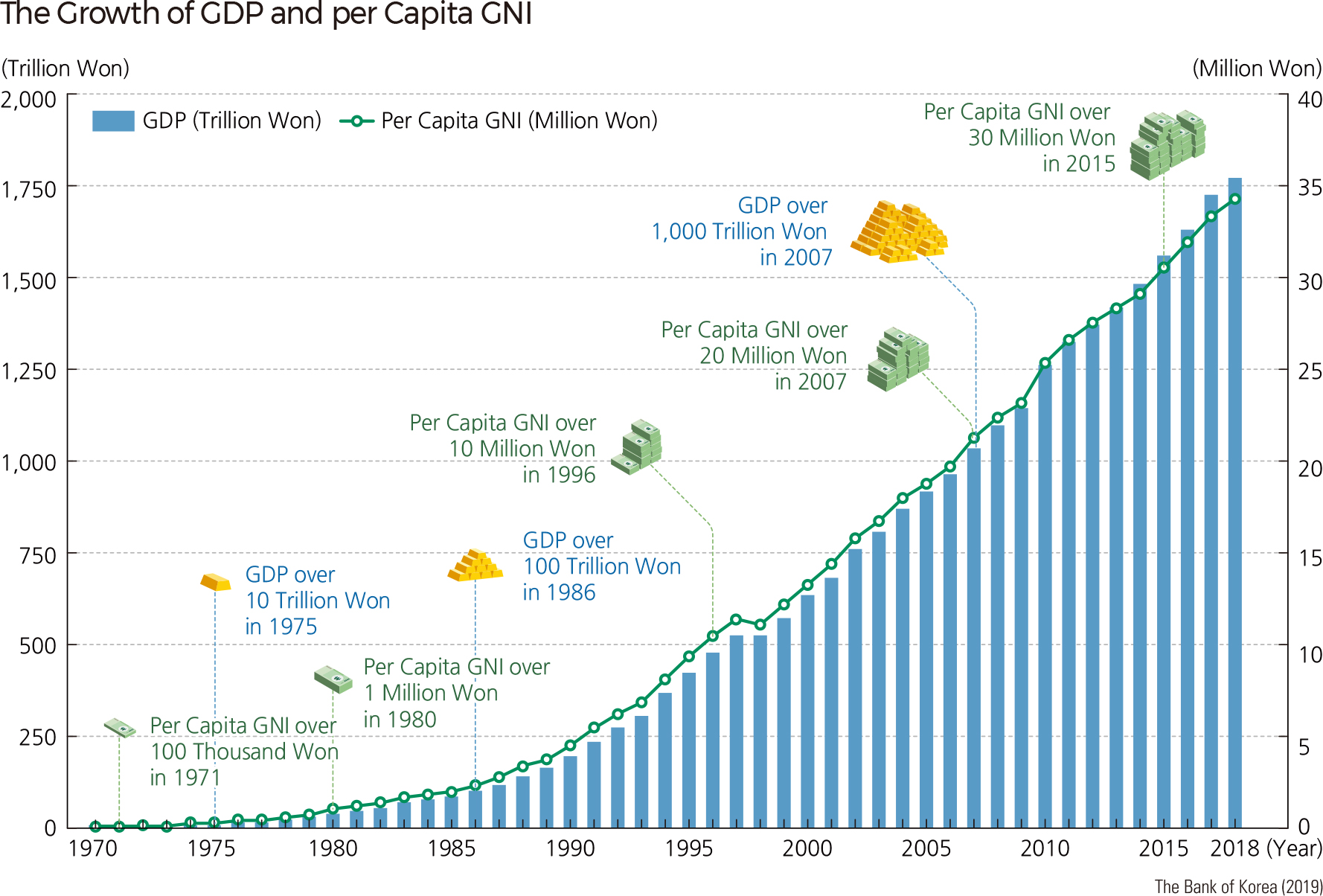English I 2019
Korea’s economic growth over the past 60 years can be attributed to both industrialization and globalization. As its industrial structure progressed rapidly from the incorporation of primary industries to the inclusion of secondary and tertiary industries, Korea achieved highly compressed economic growth. The industrial policy, especially in light of the government’s export-oriented development strategies, was a success. However, as both internal and external circumstances have changed since the 1980s, restructuring became necessary; efforts to develop intellectual talent and to conduct research and development activities were made across all industries. The government focused on fostering the private sector, and as a result, the status of chaebols (Korean conglomerates) grew continuously.
From the founding of the Republic of Korea in 1948 until the early 1960s, Korea’s economy depended primarily on agriculture, and its economic system and industrial structure resembled that of other underdeveloped countries. During that period, agriculture, forestry, and fishery accounted for more than 40% of domestic production and more than 60% of employment. On the other hand, manufacturing accounted for less than 20% of domestic production, and less than 10% of employment. Beginning in the early 1960s, Korea focused on economic growth through industrialization, and it was during this time that manufacturing became the key to Korea’s economic development. Export-led industrialization and economic growth were the new strategic foci, and the government-led industrial development policy was emphasized. In the 1960s, an export-led strategy based on light industries such as fabric, plywood, wigs, and shoes became the leading exports. In the 1970s, the government promoted heavy chemical industries, and the main industrial focus shifted from light to heavy industries overall. In the 1990s, high technology products such as semiconductors, computers, and smartphones became important exports.
The nominal GDP of Korea was ranked 31st in 1960, 32nd in 1970, and 28th in 1980. With the rapid economic development, it climbed to 18th in 1985, 15th in 1990, and 12th in 2000. It has remained between 11th and 15th since then. In 1975, the GDP reached an excess of 10 trillion won, and it exceeded 100 trillion won in 1986, reflecting a tenfold growth within 11 years. In 2007, 30 years after it exceeded 10 trillion won, it exceeded 1,000 trillion won, which is 100 times over that of 1975, a vivid indicator of Korea’s compressed economic growth by any measure. The shock of the 1997 Asian foreign exchange crisis reduced growth temporarily in 1998, but since then, it has continued to increase year after year. The per capita GNI was 100,000 won in 1971, but by 1980 it had jumped to 1 million won. By 1996, it exceeded 10 million won; by 2007 the number exceeded 20 million won, and by 2015 it exceeded 30 million won.
The success in industrialization greatly impacted the national landscape. As a result, both industrial growth and population settlement concentrated in the greater capital area, while major industries developed mainly along the Gyeongbu Axis. In the 1960s, government-led industrial policies resulted in growth pole development in certain areas, and export-led industrial development occurred in the southeastern coastal cities due to their designation as export/import industrial centers. As a corrective measure to such imbalanced growth, factory regulation in the capital area was instituted, industrial facilities were relocated to rural areas, and local businesses were fostered through the implementation of balanced growth policies. |

